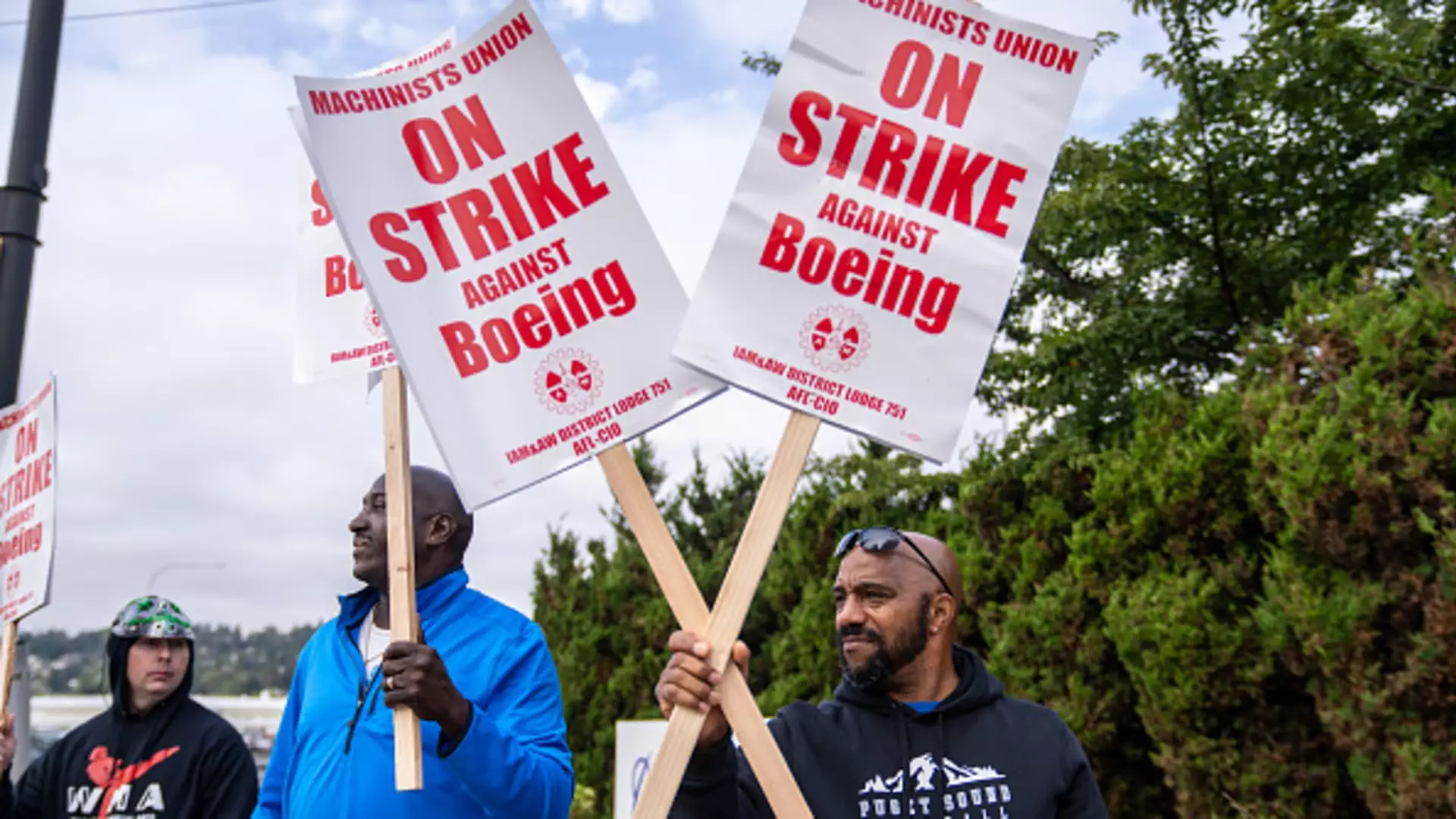In recent weeks, Boeing has faced immense challenges stemming from a significant strike involving over 30,000 machinists. This action comes in the wake of a nearly unanimous vote rejecting a proposed contract, which has resulted in escalating costs for the company and heightened tensions between the management and the employees. The implications of this extended labor dispute extend far beyond the factory floors, affecting Boeing’s production capabilities, financial health, and overall corporate strategy.
The machinists’ strike at Boeing is part of a long-standing saga for the aerospace manufacturer, which has been grappling with a series of crises and scandals over the past few years. This year’s turmoil began with a catastrophic incident related to the 737 Max, followed by two fatal crashes that dramatically undermined the company’s reputation. With the appointment of Kelly Ortberg as CEO amidst these challenges, expectations were high for a swift turnaround. However, the ongoing strike has only compounded these difficulties.
The manufacturing powerhouse now finds itself in a precarious position, as the halted production in key facilities, particularly in the Seattle area, leads to a staggering monthly cost of over $1 billion. This interruption not only affects Boeing’s bottom line but also poses questions about the company’s ability to maintain competitiveness in a tightly contested market.
Boeing’s management has attempted to navigate this tumultuous period with optimism. Reports indicated that prior to the machinists’ overwhelming rejection of the contract, there was a prevailing sense of hope among Boeing officials regarding reaching an agreement with the union. However, those expectations were dashed when workers voted 95% against the initial proposal, highlighting a significant discrepancy between management’s perceptions and the workforce’s realities.
As the strike continues, both Boeing and the International Association of Machinists and Aerospace Workers (IAM) remain at an impasse. With the union’s demand for a return to a pension plan—a point viewed as unlikely by labor experts—Boeing’s frustration has become palpable. The company has even resorted to filing an unfair labor practice charge against the union, accusing it of bad faith negotiations. This escalation has led to a deterioration in the relationship between the two parties, further complicating any potential resolutions.
The situation has left many workers without paychecks, jeopardizing their livelihood. As health benefits have also been suspended, the machinists’ resolve is being tested. Nonetheless, unlike previous strikes, such as the protracted one in 2008, the availability of contract work in the Seattle region provides some relief for disgruntled employees. Resources are being directed to local assistance programs, allowing workers to seek alternative employment opportunities during this tumultuous time.
In a shocking turn, following the strike’s inception, CEO Ortberg announced plans to cut the company’s workforce by about 10%. This decision includes the elimination of jobs at various levels, from executives to entry-level employees. Additionally, the postponement of production timelines for key aircraft like the 777X until 2026 indicates a larger strategic retreat that could further shake investor confidence.
Boeing’s financial outlook worsens with each passing day of the strike. Preliminary quarterly results indicate expected losses nearing $10 per share, alongside projected charges exceeding $5 billion across its commercial and defense sectors. Given that the company has not reported a profit since 2018, analysts are poised to question its viability if progress does not materialize swiftly.
Richard Aboulafia, an aerospace analyst, notes that while labor costs represent a small fraction—approximately 5%—of total airplane production expenses, workforce stability is essential for operational success. The drastic layoffs planned, juxtaposed with an ongoing strike, arguably signal that Boeing is undermining its own efforts to achieve stable production and profitability.
As the strike continues, the path forward for Boeing is fraught with uncertainty. The prospects of securing a deal hinge not only on the willingness of management to negotiate but also on the employees’ desire for meaningful concessions that address their concerns. With mounting pressure from investors and stakeholders, CEO Ortberg must find innovative solutions that prioritize both production stability and employee satisfaction, a challenging balance in light of the existing labor strife.
The ongoing strike at Boeing represents both a crisis and an opportunity. While the immediate repercussions are severe, they may compel the company to reflect on its long-term strategies and labor relations practices. As the aviation giant navigates this precarious moment, all eyes will remain focused on the negotiations to determine whether Boeing can emerge stronger or whether it will succumb to the cascading effects of its internal conflicts.

